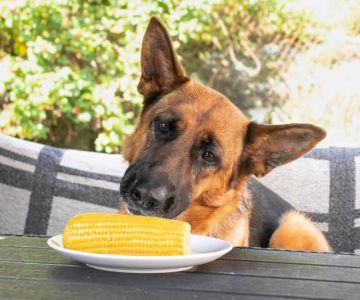1. Introduction: Can Dogs Eat Celery Sticks?
As dog owners, we’re always looking for healthy treats that we can share with our pets. Celery is one vegetable that often pops up on the list of “safe snacks,” but is it really a good option for your dog? In this article, we’ll dive into whether dogs can eat celery sticks, the health benefits, and some precautions to keep in mind when feeding your dog this crunchy vegetable.
2. Health Benefits of Celery for Dogs
Celery is known for being low in calories, making it a great snack for dogs that need to maintain a healthy weight. But is it just a low-calorie food, or does it offer more to your dog’s diet? Let’s look at some of the benefits of feeding your dog celery sticks.
2.1. High in Nutrients
Celery is packed with vitamins and minerals that are beneficial for dogs. It contains vitamin A, vitamin K, and important antioxidants like flavonoids, which can contribute to your dog’s overall health. Vitamin K is particularly good for promoting bone health and supporting your dog’s immune system.
2.2. Hydration and Fiber
Celery is mostly water, which helps to keep your dog hydrated. It’s also rich in fiber, which supports digestive health and helps keep your dog regular. If your dog is having trouble with constipation, adding small pieces of celery to their diet could help.
2.3. Low Calorie and Weight Control
One of the best things about celery is that it’s low in calories, so it makes for a guilt-free treat. If you have a dog that is overweight or prone to gaining weight, celery can be a great addition to their diet without the risk of excess calories.
3. Potential Risks of Feeding Celery to Dogs
While celery can be a healthy snack, it’s important to consider the potential risks before offering it to your dog. Not all dogs will enjoy or tolerate celery, and there are a few things to keep in mind when feeding your dog this vegetable.
3.1. Choking Hazard
One of the main risks associated with feeding dogs celery is the potential for choking, especially if the celery is cut into large chunks. Celery stalks can be tough and fibrous, and dogs that are not accustomed to chewing vegetables may try to gulp them down, leading to a choking hazard. Always cut celery into small, manageable pieces to avoid this risk.
3.2. Gastrointestinal Issues
Although celery is generally good for digestion, some dogs may experience gastrointestinal upset when introduced to new foods. If your dog eats too much celery, they may experience bloating, gas, or diarrhea. Start by offering small amounts of celery and monitor your dog’s response.
3.3. Allergies and Sensitivities
Like any new food, celery can cause allergic reactions in some dogs. Symptoms of a food allergy may include itching, swelling, vomiting, or diarrhea. If your dog shows any of these signs after eating celery, stop feeding it to them and consult your veterinarian.
4. How to Safely Introduce Celery to Your Dog’s Diet
If you’re considering adding celery to your dog’s diet, it’s important to do so safely and in moderation. Here’s how you can introduce celery to your dog’s snacks:
4.1. Start with Small Pieces
When introducing celery to your dog, start by cutting it into small, bite-sized pieces. This will prevent any choking risks and allow you to observe how your dog reacts to the new treat. Keep in mind that celery should be considered a supplement to your dog’s regular diet and not a substitute for their primary food.
4.2. Watch for Reactions
As you introduce celery, keep an eye on any changes in your dog’s behavior or health. If you notice any signs of gastrointestinal distress, such as vomiting or diarrhea, discontinue feeding celery and consult your veterinarian.
4.3. Avoid Seasoning
When feeding your dog celery, it’s essential to avoid seasoning it with any added salts, spices, or oils. These ingredients can be harmful to dogs and may cause an upset stomach or other health problems. Stick to plain, fresh celery for the healthiest option.
5. Alternatives to Celery: Other Safe Vegetables for Dogs
If celery isn’t your dog’s favorite, there are plenty of other safe vegetables you can offer. Some other dog-friendly vegetables include:
- Carrots
- Green beans
- Cucumber
- Sweet potatoes (cooked)
All of these vegetables are low-calorie, rich in nutrients, and safe for dogs when offered in moderation. They also serve as great alternatives for adding variety to your dog’s diet.
If you’re unsure about which foods are best for your dog, or if you want expert advice on keeping your pet healthy, visit Hidden Brook Veterinary for more information and recommendations on the best products and services for your furry friend.












